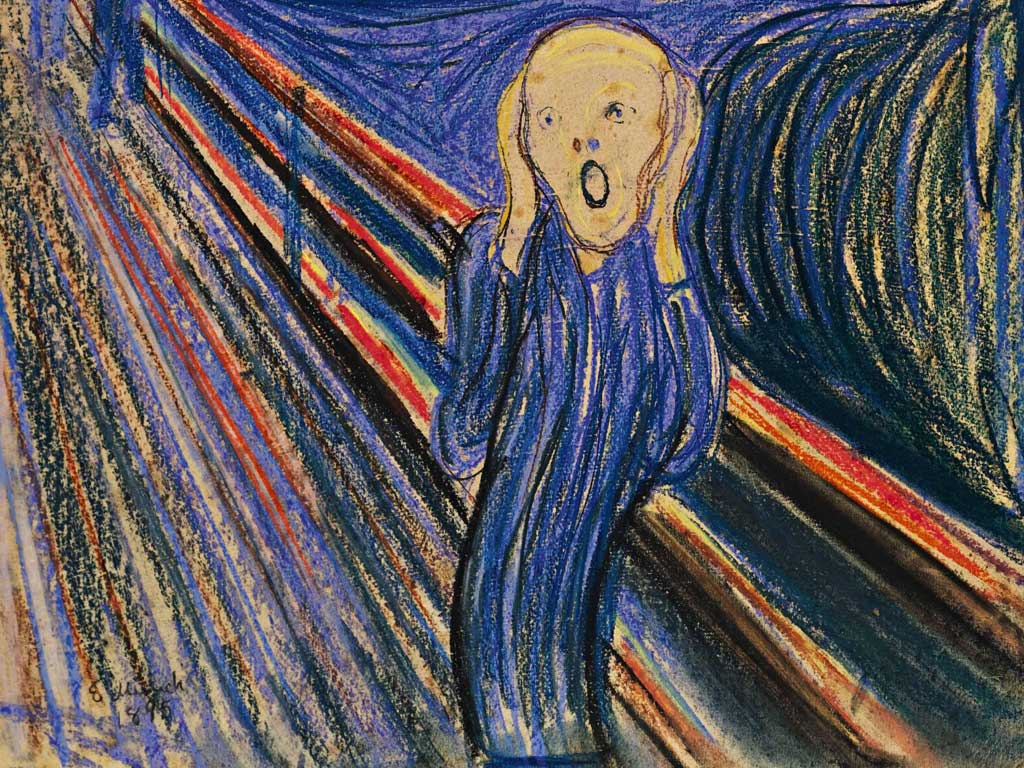Edvard Munch: Angst-ridden artist or canny businessman?
Tate Modern exhibition shows how the painter obsessively reworked his paintings

One of the most celebrated paintings by Edvard Munch will go on display alongside a later version of it this month, as part of a major new exhibition of the Norwegian's work. It will be the first time the two paintings have been seen together in the UK.
The Sick Child, from 1907, the only Munch painting in the Tate's collection, will be shown alongside a 1925 version at Tate Modern. By pairing some of his earlier works with later versions, the exhibition shows how Munch's style and technique developed even while he was exploring the same motifs. This reworking foreshadows debates about repetition and reproduction that became important much later in the 20th century, with the work of artists such as Andy Warhol.
Munch, who died in 1944, often continued to employ motifs over a long period of time: there are six versions of The Sick Child. One version of The Scream (there were four in all) sold for a record £74m at auction last month. There are seven versions of The Girls on the Bridge, while the subject of the 1893 painting Vampire features in a further 11 paintings.
The full extent of Munch's reworkings came to light with the publication of the catalogue raisonné of his paintings in 2009. Nicholas Cullinan, curator of international modern art at Tate Modern, said that the reworking was a neglected, but striking, aspect of his work.
"The sheer scope and the sheer quantity of the reworkings really make it look as if this was something that was very interesting for him: the idea of reworking a painting again and again and again, which foreshadows many later debates and themes that would come to the fore in the20th century, with people like Andy Warhol, who of course also made works after Munch, so there's a kind of irony there."
The degree to which Munch made changes when revisiting motifs differed, but his reworkings always moved the composition of the painting forward. The Tate Modern exhibition, entitled Edvard Munch: The Modern Eye, will showcase one of the more radical departures by displaying Vampire alongside the later Vampire in the Forest, dated 1916-18. While the earlier work has a dark setting, focusing attention on the dynamic between an embracing couple, 20 years later Munch has transposed the pair into an outdoor "fairly Arcadian, bucolic" scene.
Mr Cullinan said it was impossible to tell whether Munch reworked so many of his paintings because he was trying to work through some kind of psychological trauma or obsession, or whether he was just a "very canny businessman", replacing pieces that had been sold. "Probably both are true, but they are contradictory, which is interesting. It's at the heart of the show and trying to show him as a more nuanced character than the cliché of an angst-ridden Nordic brooding figure."
Munch was not the first artist to produce more than one version of a painting, but he does it so many times, often altering things over many years, according to Mr Cullinan, that it seems to be a major preoccupation for him.
Subscribe to Independent Premium to bookmark this article
Want to bookmark your favourite articles and stories to read or reference later? Start your Independent Premium subscription today.

Join our commenting forum
Join thought-provoking conversations, follow other Independent readers and see their replies